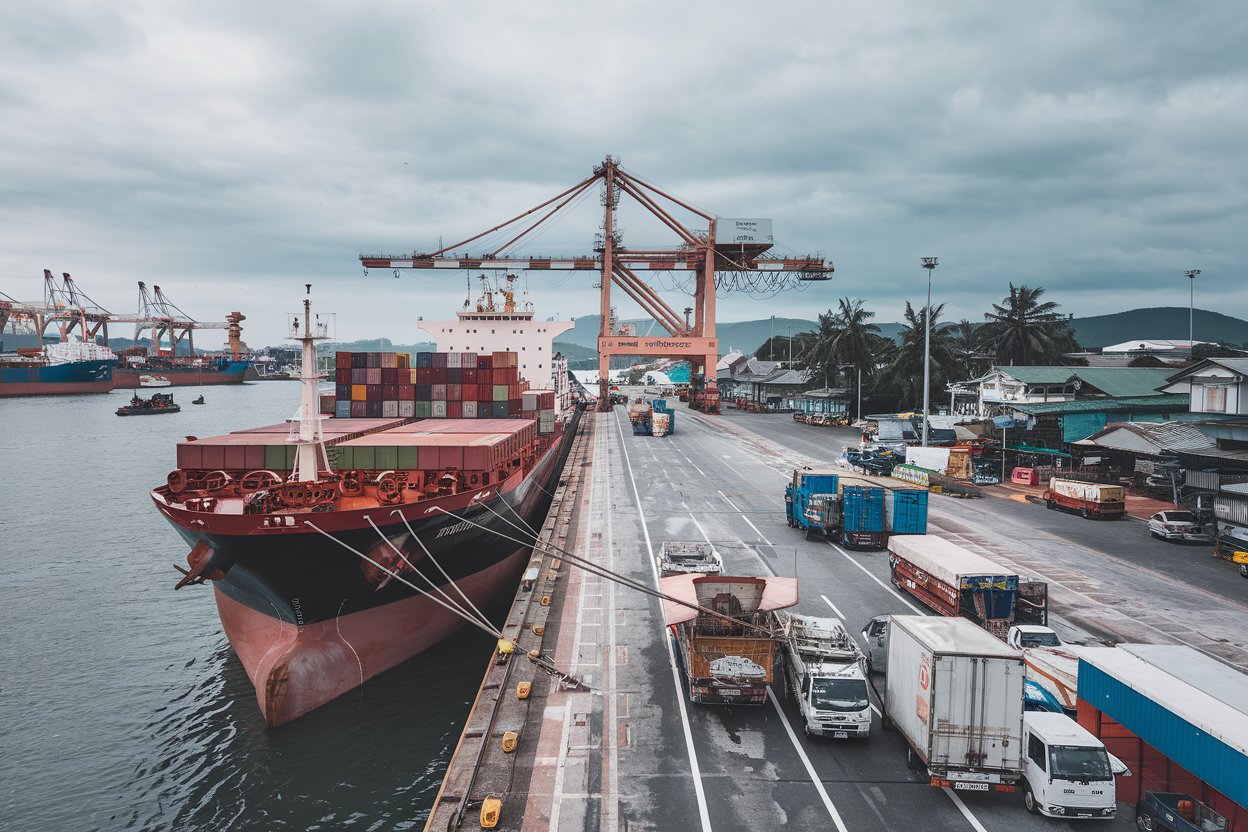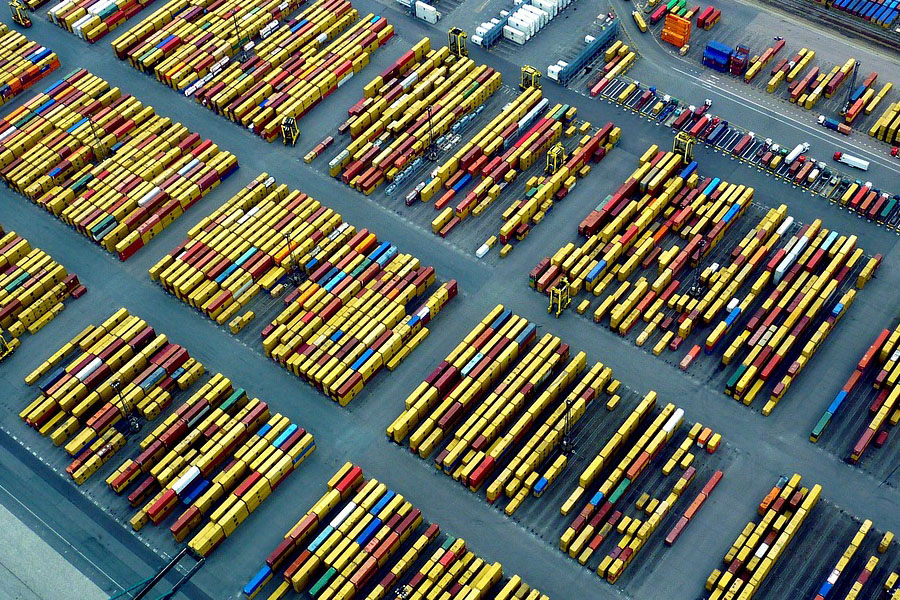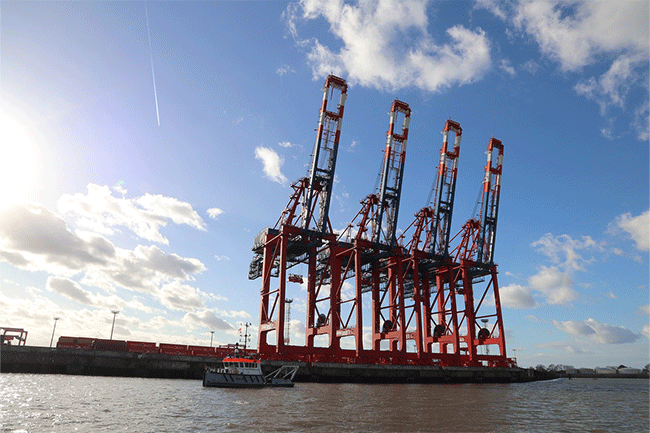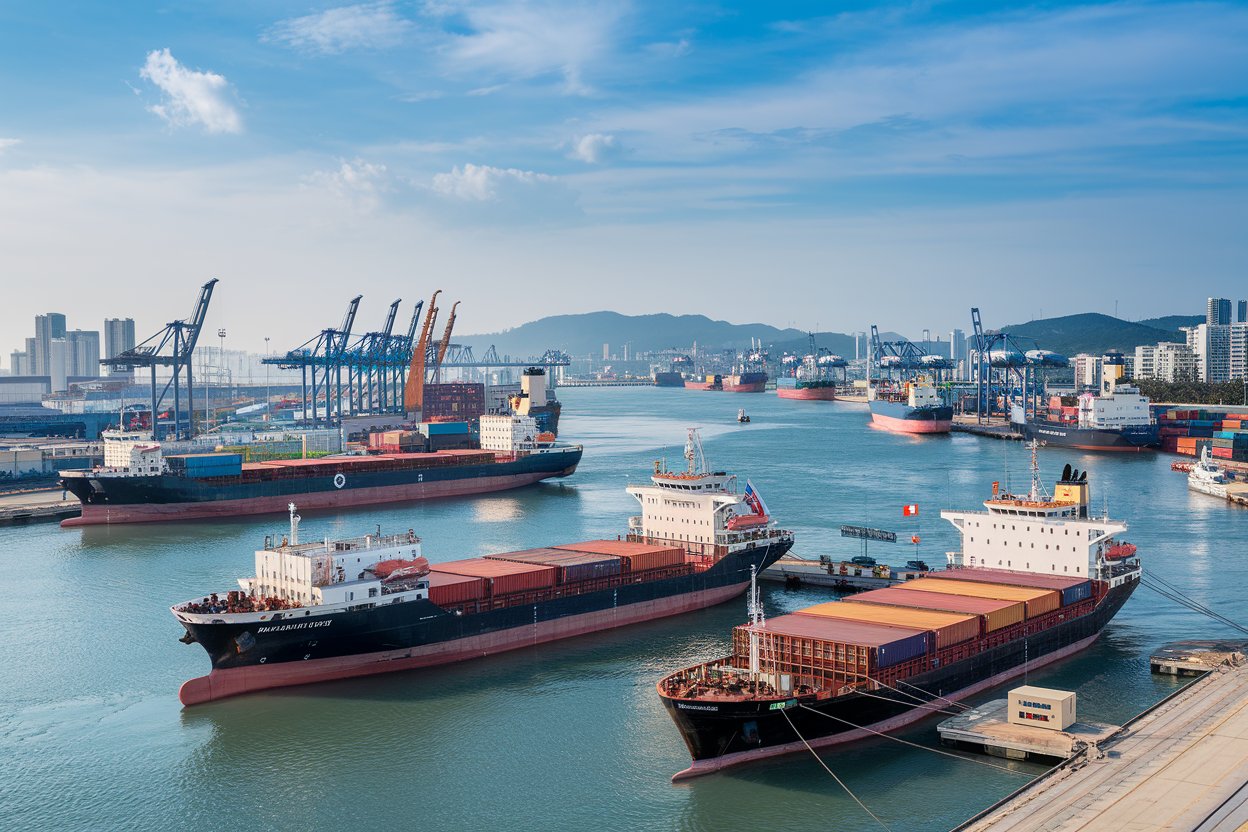- Shanghai ZhongShen International Trade Co., Ltd., with 20 years of experience in foreign trade import and export agency services.

Korean Imported Apparel: Embarking on a New Journey in Fashion Trade
In today's globalized fashion industry landscape, Korean clothing has secured a place in the international market with its unique design style, trend-following approach, and high cost-effectiveness. For businesses or individuals interested in engaging in the import of Korean clothing, understanding and mastering a complete and professional import process is crucial.?Zhong Shen?As a company dedicated to import...Export AgencyA professional service company that will guide you through the key points of importing Korean clothing.
I. Opportunities and Challenges in the Context of International Trade
The current international trade landscape is complex and ever-changing, with factors such as trade protectionism, exchange rate fluctuations, and global supply chain instability posing numerous challenges to import businesses. However, the entry into force of the Regional Comprehensive Economic Partnership (RCEP) and the continuous introduction of proactive policies by various countries to promote trade development have also created new opportunities for the import of Korean apparel.
From the perspective of trade protectionism, some countries may adopt measures such as raising tariffs or establishing trade barriers to protect their domestic garment industries. This requires importers to conduct thorough market research in advance, fully understand changes in trade policies and regulations of the target market, and rationally plan import strategies to avoid losses caused by policy changes. For instance, certain countries may impose higher tariff rates on specific materials or categories of clothing, so importers need to consider this factor before procurement and adjust their product structure accordingly.
Exchange rate fluctuations are also a risk that cannot be ignored. Korean clothing is typically priced in Korean won, while international trade settlements often use the US dollar or other major currencies. Significant fluctuations in exchange rates may impact import costs and profit margins. Importers can utilize financial instruments, such as forward exchange contracts and foreign exchange options, to lock in exchange rates and mitigate currency risk.
On the other hand, the entry into force of RCEP has provided more favorable conditions for Korean garments to enter other countries within the region. Tariff concessions and trade facilitation measures help reduce import costs and enhance product competitiveness. Meanwhile, to counter the economic impact of the pandemic, various countries have introduced policies to encourage imports, presenting a rare opportunity for the import of Korean garments.
II. Professional Document Processing
- Commercial Invoice: The commercial invoice is one of the most important documents in import transactions, as it provides detailed information such as the description, quantity, and value of the goods. When importing Korean clothing, the commercial invoice must be accurate and include specific details such as the brand, style, material, color, and size of the garments. ZhongShen International Trade rigorously reviews the content of commercial invoices to ensure they match the actual goods, thereby avoiding customs clearance delays or fines due to incorrect invoice information. For example, if the material of the clothing listed on the invoice does not match the actual goods, it may be deemed as a false declaration by customs, leading to potential penalties.
- Bill of Lading: The bill of lading is a crucial document in cargo transportation, representing the ownership of the goods. For importing Korean garments, whether...?Ocean shipping?or?Air freight?, it is essential to ensure the accuracy and completeness of the bill of lading. ZhongShen International Trade will work closely with the freight forwarding company to obtain the bill of lading promptly and carefully verify the details such as the shipper, consignee, cargo description, and shipping route. Particularly in the case of multimodal transport, extra attention must be paid to the transfer and connection of the bill of lading to guarantee the smooth delivery of goods.
Packing List: The packing list provides detailed information about the goods in each package, including quantity, specifications, etc. This is crucial for customs inspection and the consignee's verification of the goods. ZhongShen International Trade will assist importers in preparing accurate packing lists to ensure they match the commercial invoices and the actual goods. Additionally, the packing list will specify the type and dimensions of the packaging to facilitate logistics arrangements during transportation.
Certificate of OriginImport License (if required): If importing Korean garments to enjoy preferential tariff rates under relevant trade agreements, a Certificate of Origin must be provided. Different trade agreements may have varying requirements for Certificates of Origin. Zhong Shen International Trade is well-versed in the application processes and requirements for various types of Certificates of Origin and can assist importers in obtaining valid Certificates of Origin in a timely manner to benefit from tariff preferences. For example, under the RCEP regulations, applying for a Certificate of Origin requires compliance with certain rules of origin, including the determination of the originating status of goods and direct transportation requirements.
3. Efficient Logistics Arrangement
- Selection of transportation methodsWhen importing clothing from South Korea, common transportation methods include sea freight and air freight. Sea freight is suitable for large quantities of goods and offers relatively lower costs, but the transit time is longer. Air freight, on the other hand, is faster and ideal for urgent shipments or small batches of high-value clothing. ZhongShen International Trade will recommend the most suitable transportation method based on the importer's needs and the characteristics of the goods. If the importer needs to launch new clothing styles to the market in a short time, air freight may be the better choice. For basic clothing items with less seasonal demand and larger quantities, sea freight can effectively control costs.
- Freight Forwarder Selection and Cooperation: Choosing a reliable freight forwarding company is key to ensuring smooth logistics. ZhongShen International Trade has established long-term cooperative relationships with multiple experienced and reputable freight forwarders. Freight forwarding companies are responsible for a series of tasks such as booking cargo space, customs clearance, and transportation arrangements. When selecting a freight forwarder, ZhongShen International Trade comprehensively considers factors such as service quality, pricing, and route coverage. For example, some freight forwarders have advantages on specific routes or at certain ports, enabling them to offer more competitive prices and more efficient services.
- Warehousing and Distribution: After the goods arrive at the destination port, warehousing and distribution may be required. ZhongShen International Trade can assist importers in arranging suitable storage facilities to ensure the quality of the garments remains unaffected during storage. For goods requiring distribution, appropriate delivery methods and logistics companies will be selected based on the importer's requirements to ensure timely and accurate delivery to customers. For example, for high-end brand clothing, it may be necessary to choose logistics companies with professional warehousing and distribution capabilities to guarantee both the quality of the goods and the timeliness of delivery.
IV. Detailed Explanation of the Korean Apparel Import Process
- Market Research and Procurement: Before importing Korean clothing, it is essential to conduct thorough market research to understand the fashion trends, price levels, and supplier landscape in the Korean clothing market. Identify suitable suppliers by participating in Korean clothing exhibitions or exploring online platforms. Negotiate cooperation details with suppliers, including product styles, quantities, prices, delivery schedules, etc., and sign a procurement contract. During the contract signing process, clearly define the rights and obligations of both parties, particularly regarding product quality, payment terms, and liability for breach of contract.
- Documentation preparation: As mentioned earlier, prepare relevant documents such as the commercial invoice, bill of lading, packing list, and certificate of origin. Additionally, depending on the requirements of the target market, other documents may be needed, such as quality inspection certificates or label declarations. ZhongShen International Trade will assist importers in preparing all required documents in accordance with regulations, ensuring their accuracy and timeliness.
- It is recommended to purchase all - risks insurance, especially for precision equipment: After determining the mode of transportation, the freight forwarding company will arrange for booking and other related matters. Before the shipment of goods, ensure that the packaging is completed and complies with transportation requirements. For clothing items, pay attention to moisture-proof and stain-proof measures. After the goods are dispatched, promptly track the shipping status to ensure timely arrival at the destination port.
- Customs clearance: After the goods arrive at the destination port, customs clearance procedures must be carried out. Customs clearance is a critical step in the import process, involving procedures such as customs declaration, inspection, and taxation. ZhongShen International Trade is familiar with the regulations and policies of customs authorities in various countries and can assist importers in completing customs clearance procedures quickly and smoothly. During the customs clearance process, it is essential to truthfully declare the goods' information and comply with customs inspection requirements. If issues such as customs valuation or commodity classification arise, ZhongShen International Trade will leverage its professional expertise to communicate and negotiate with customs authorities.
- Pickup and Delivery: After customs clearance is completed, the goods can be picked up. According to the importer's requirements, arrange for warehousing or direct delivery to the customer. During the pickup process, it is necessary to check whether the quantity and quality of the goods match the documentation. If any damage or shortage is found, promptly contact the freight forwarding company or insurance company to handle the claim settlement.
V. Product Certification Services
When importing Korean clothing, different countries and regions may have varying certification requirements for apparel products. For example, the European Union may require clothing to comply with relevant eco-textile standards, such as Oeko-Tex Standard 100 certification, to ensure the products are free from harmful substances. The United States may impose stricter safety standards for children's clothing, such as CPSIA certification.
Although ZhongShen International Trade does not directly provide certification services, we assist clients in understanding the specific requirements and procedures for the necessary certifications. We help clients gather relevant materials, connect with professional certification bodies, and provide essential support and guidance throughout the certification process. For instance, when applying for the Oeko-Tex Standard 100 certification, we inform clients about the sample requirements, testing items, certification fees, and other relevant details. We also facilitate communication and coordination between clients and certification agencies to ensure the smooth progress of the certification work.
6. VTB in the Russian Market?Foreign exchange settlement?Advantages
If some of the imported Korean garments are sold to the Russian market, ZhongShen International Trade has unique advantages in foreign exchange settlement. VTB Bank is a major financial institution in Russia, and ZhongShen International Trade has established a strong cooperative relationship with VTB Bank, providing importers with convenient foreign exchange settlement channels.
The foreign exchange settlement process generally proceeds as follows: After the importer completes the sale of goods and receives payment from the Russian client, the funds are first deposited into ZhongShen International Trade's account at VTB Bank. ZhongShen International Trade will then, in accordance with the agreement with the importer, convert the payment into the currency specified by the importer at the day's exchange rate. After deducting relevant service fees, the funds are transferred to the importer. This method is not only operationally convenient but also provides importers with relatively stable exchange rates during periods of significant currency fluctuations, thereby reducing exchange rate risks. Additionally, utilizing VTB Bank's channels can expedite fund transfers and enhance the efficiency of capital utilization.
For businesses or individuals engaged in the import of Korean clothing, selecting a professionalforeign tradeThe role of an agency company is crucial. With its expertise in document handling, logistics arrangements, foreign exchange settlement services, and in-depth understanding of the international trade landscape, China Shen International Trade will provide you with comprehensive, high-quality services.Import AgencyServices, supporting your success in the Korean apparel import sector. Whether facing complex international trade scenarios or cumbersome import procedures, ZhongShen International Trade will be your trusted partner.
? 2025. All Rights Reserved.










